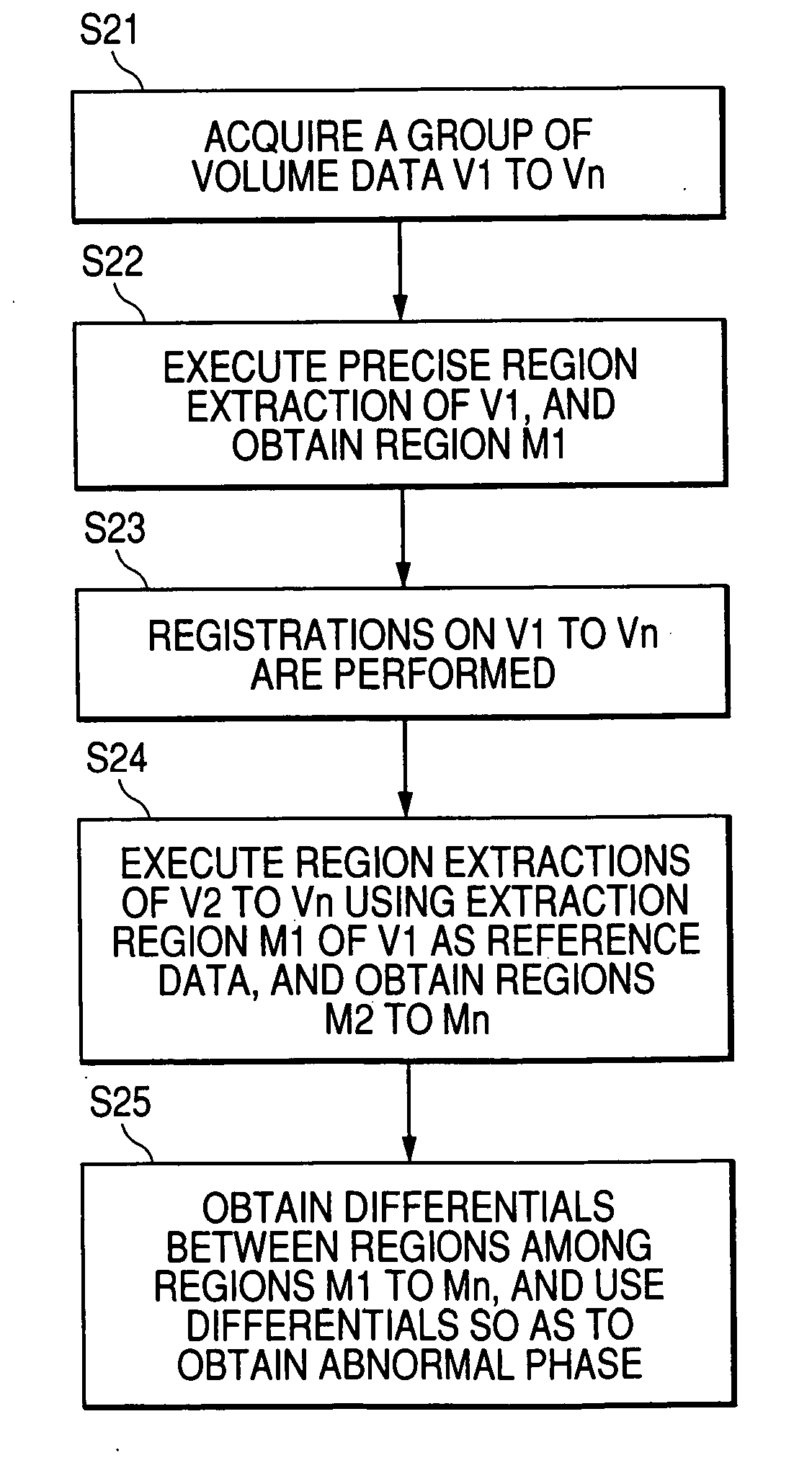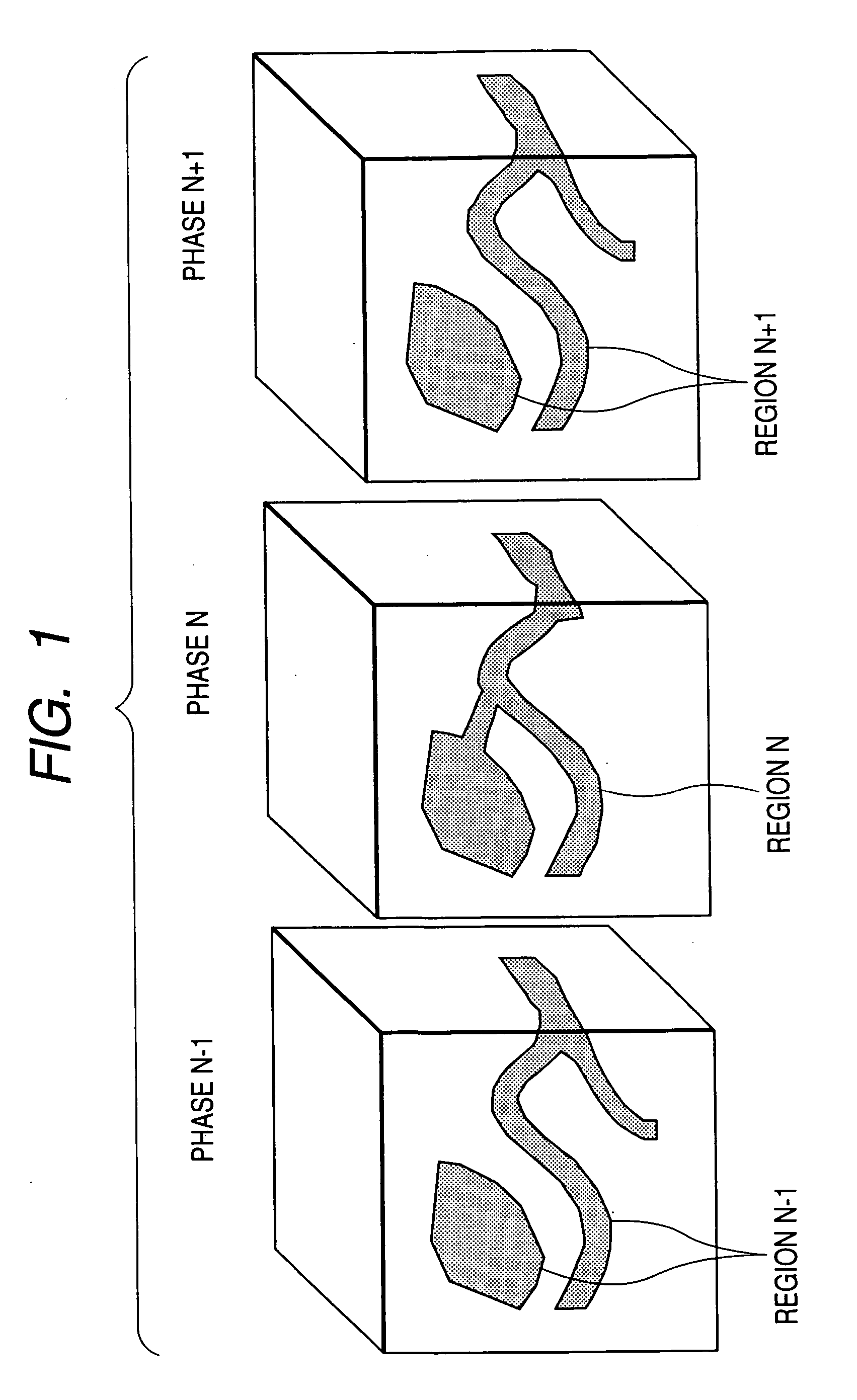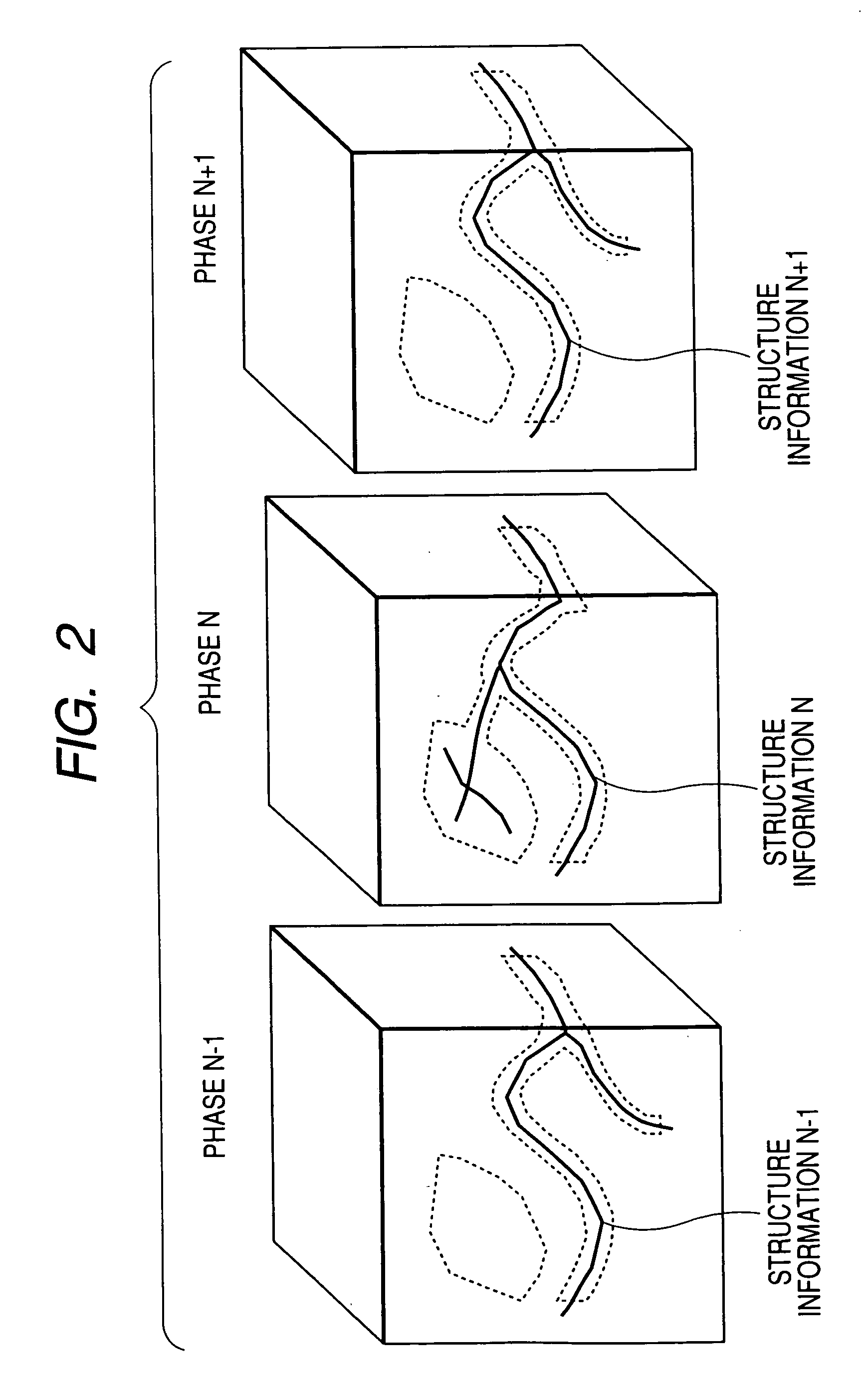Image processing method and computer readable medium for image processing
a technology of image processing which is applied in the field of image processing method and computer readable medium for image processing, can solve the problems of loss of correspondence between the regions, inability to obtain abnormal phase, and difficulty in detecting abnormal phase by the method, so as to achieve the effect of reducing the calculation amoun
- Summary
- Abstract
- Description
- Claims
- Application Information
AI Technical Summary
Benefits of technology
Problems solved by technology
Method used
Image
Examples
first embodiment
[0038]FIG. 1 shows a case where a region of interest of a heart and a vessel, for example, is extracted in the image processing method of a first embodiment. From image data in each phase, the region is extracted using an existing method (3D region growing method, etc.,) and a mask representing the extraction region is created. That is, region N−1 is extracted in phase N−1, region N is extracted in phase N, and region N+1 is extracted in phase N+1.
[0039] Next, structure information of a tissue is calculated from the extraction result. FIG. 2 shows how the structure information is calculated by performing skeltonization on the extraction regions, and a tree-like path (graph) is obtained in the image processing method of the embodiment. That is, structure information N−1 representing a center line of the vessel, etc., is calculated from the data in phase N−1, structure information N is calculated from the data in phase N, and structure information N+1 is calculated from the data in p...
second embodiment
[0046]FIG. 4 shows how a failure in the region extraction is detected by detecting changes in the coordinates of a tissue in the image processing method of a second embodiment. For example, range coordinates of an extraction region or coordinates of the center of gravity of the region are obtained in each phase. That is, the range coordinates (x1-x2, y1-y2, z1-z2) (from x1 to x2, from y1 to y2, from z1 to z2) of an extraction region or the coordinates of the center of gravity (x3, y3, z3) of the region are obtained in the phase N−1, and the range coordinates (x5-x6, y5-y6, z5-z6) of an extraction region or the coordinates of the center of gravity (x4, y4, z4) of the region are obtained in the phase N.
[0047] In this case, when the region extraction results in failure, the coordinates of the center of gravity (x4, y4, z4) and the range coordinates (x5-x6, y5-y6, z5-z6) largely move as shown in the phase N. Accordingly, a failure in the region extraction is detected. In addition, a co...
third embodiment
[0049]FIG. 5 shows how a failure in the region extraction is detected by detecting changes in surface information of a tissue in the image processing method of a third embodiment. For example, number of surfaces is detected for each phase, or heterogeneous topology like a surface included in a surface is detected for each phase, and a comparison is made in the preceding and subsequent phases. When the number of surfaces or the topology changes in the preceding and subsequent phases, a failure in the region extraction is detected.
[0050] According to the image processing method of the embodiment, when the structure information of the number of surfaces, the topology, etc., in the preceding and subsequent phases change, namely, when an anomaly in the structure information is detected, a failure in the region extraction is detected. Thus, reliability of the region extraction result can be determined. Since the re-calculation of the region extraction of the failure part can be performed...
PUM
 Login to View More
Login to View More Abstract
Description
Claims
Application Information
 Login to View More
Login to View More - R&D
- Intellectual Property
- Life Sciences
- Materials
- Tech Scout
- Unparalleled Data Quality
- Higher Quality Content
- 60% Fewer Hallucinations
Browse by: Latest US Patents, China's latest patents, Technical Efficacy Thesaurus, Application Domain, Technology Topic, Popular Technical Reports.
© 2025 PatSnap. All rights reserved.Legal|Privacy policy|Modern Slavery Act Transparency Statement|Sitemap|About US| Contact US: help@patsnap.com



